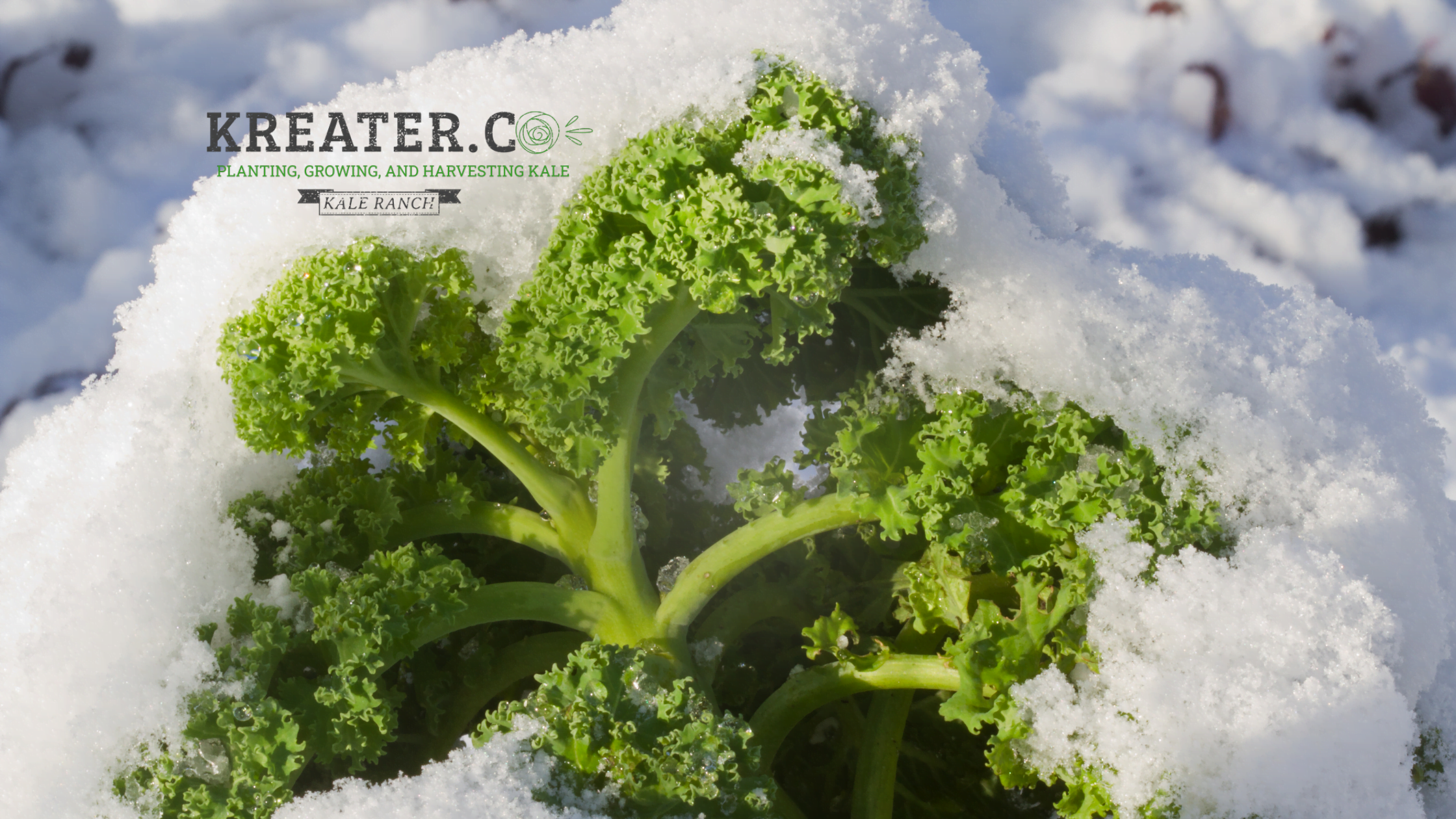Learn how to freeze kale, a nutrient-rich leafy green, for longevity. Perfect for salads or smoothies, discover the benefits of preserving kale.
Do you enjoy your kale in smoothies, soups, and stews? Then you want to preserve your kale as much as you can, and to do this; it is best to have it frozen.
Kale is a delicious and fantastic veggie full of nutrients, this superfood is a must in your diet, and it is super easy to incorporate in tons of recipes. So if you want to get the most of your kale, today we’ll be covering all there is to know about how to freeze kale.
Preserving kale frozen is a great idea since who doesn’t want to enjoy the seemingly magical properties of this leafy veggie.
Kale is one of the most nutrient-rich foods we can eat; it is full of vitamins and minerals and packed with antioxidants; basically, you need to have it in your life.
In addition to being super healthy for our bodies, kale is super versatile since you can have it raw on salads or keep it frozen for your favorite smoothie.
Quick Guide: How to Freeze Kale
- Clean and De-stem: Rinse the kale thoroughly, also soaking in a vinegar solution if needed. Remove stems and any critters.
- Chop: Cut leaves into bite-sized pieces for easier use later.
- Blanch: Put the greens in boiling water for 3 minutes, then immediately transfer to ice water.
- Dry and Bag: Pat dry the leaves, divide them into freezer bags, remove air, and seal. Flatten bags for quick thawing.
- Freeze: Store in the freezer up to a year.
Note: Unblanched kale can be frozen but use within 4-6 weeks to avoid bitterness. Best used in stews and soups.
Frozen kale FAQ’s
Can kale be frozen?
Like with any other leafy veggies; kale can certainly be frozen. One of the characteristics of kale is that it produces loads! So to have it frozen is a great way to deal with your kale leftover and avoid wasting it.
So yes, you can have it frozen to be used throughout the winter in soups and smoothies. Who doesn’t love kale smoothies? They are a great way to eat veggies right off the bat for breakfast! Kale can easily be frozen by blanching the greens in boiling water for three minutes.
Why freeze kale?
Freezing kale is a fantastic way to reduce your food waste because it who isn’t guilty of letting a bag of greens go bad in the back of your fridge!
We hear you, and it can be complicated to eat an entire bunch or bag of kale before it starts to get slimy and all gross and stinky in the back of your refrigerator.
So don’t be afraid of freezing your kale as soon as you get it from the store or after harvesting; this way, you won’t forget it later. And is also a good thing to do it while it’s most fresh.
How long does kale last in the freezer?
You’ll be surprised to know that kale lasts a long time when properly stored in the freezer. Your frozen kale can remain frozen for up to 12 months!
How to use frozen kale?
Once your kale has been prepped and frozen, it is important to keep in mind and understand how you can use it or what recipes are best to use later.
You must know that your frozen kale will change in texture, so it is not the best idea to use it in salads or chips. After freezing and thawing, frozen kale will generally get a little softer, and it can break into small pieces easily.
Therefore, your frozen kale will take on a new path and become a great addition to any recipe that requires the kale to be sautéed or added to a hot liquid, like a soup or stew.
And because it thaws so quickly in the hot pan, you don’t need to thaw before adding it to your recipe. Check out some other delicious examples of recipes where frozen kale would work out nicely.
- Kale Power Bowls
- Zuppa Toscana
- Garlicky Kale and Ricotta Pizza
- Smoky Potato and Chickpea Stew
- Kale smoothies. Just go ahead and toss a handful into your blender with the rest of your fruits for a great morning start.
How to Freeze Kale – Detailed Step by Step Guide
Rinse, pat dry, and de-stem. Wash kale to remove dirt and debris. It’s a good idea to separate leaves since dirt tends to collect between the bases of leaves. Kale may have aphids, caterpillars, beetles, or other critters hiding beneath or between leaves.
Dunking leaves in water should dislodge any hitchhikers, but you can also soak leaves in a vinegar solution. Use 1 to 3 tablespoons of vinegar per gallon of water, and soak leaves for 20 to 30 minutes.
After soaking, rinse leaves. When freezing kale, you’ll find that it’s easiest to use later on if you de-stem the vegetable. You can discard the stems.
Or you could also freeze stems; kale stems can be fibrous, making a nice addition to soups and stir-fries but plan to do so separately from the leaves.

Roughly chop the greens into bite-size pieces. To remove leaf blades from stems, fold leaves in half and tear or cut the central stem away. Roughly tear or chop leaves. Again, it will become easier to utilize it later because it will be already cut down into edible pieces.

Blanche the greens for 3 minutes in softly boiling water. Promptly remove after 3 minutes, and place in a bowl of ice water. Use a strainer for fishing leaves from both boiling and ice water.

Remove the greens from the ice water, pat dry, and divide them into freezer bags. Dry leaves by placing them on a towel.
Fill the towel with leaves, then roll it up and squeeze to remove excess water. Squeeze out the air from the freezer bags.
Always remove as much air as possible before sealing bags. A vacuum sealer system works well with kale. Avoid over-packing bags. Flatten bags before sealing to create kale portions that thaw quickly.
Store in the freezer for up to a year.

Can you freeze kale without blanching?
However, the answer is yes; however, I plan to use it soon, within four to six weeks. Unblanched kale may develop a bitter flavor because you haven’t stopped the action of the naturally occurring ripening enzymes in the leaves.
Unblanched kale leaves work well in stews and homemade soups, where any bitterness is likely to be overpowered by other flavors.
Alternative ways how to freeze kale
Pureed Kale
This is also a great way to freeze kale; you have it pureed first and then keep it frozen when you want to add small amounts of kale puree to chunk-free recipes like smoothies, soups, or sauces. Use frozen, pureed kale in recipes such as Sun-Dried Tomato Pesto.
- Puree 3-4 cups of packed kale with 1 cup of water using the “juice” cycle on your blender.
- Pour the juice into ice cube trays and freeze.
- Once frozen, transfer the cubes to a larger freezer bag. Date and label the bag and stash it in your freezer.
Freezer Smoothies
This is another alternative to freezing kale; basically, you pre-assemble a freezer-friendly bag containing all of the necessary ingredients for your favorite smoothie recipe.
All you have to do is stuff a freezer bag with your favorite fruits and/or vegetables, label, date, and freeze. When you’re ready to make your smoothie, dump the contents in the blender, add your liquids, and voila.
Not sure about freezing your kale? Find out other ways how to store kale.


